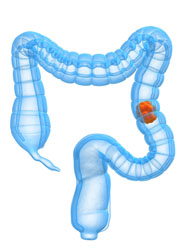Understanding the link between DNA repair and cancer
By the term DNA mismatch repair (MMR) scientists refer to the well-conserved process of error correction during replication of the genetic material. A defect in this system can cause certain sections of DNA that contain repeats of a particular sequence – known as microsatellites – to become unstable. This microsatellite instability (MSI) in turn causes cancer. Research has already linked hereditary non-polyposis colorectal cancer (HNPCC) and familial gastric cancer (FGC) with MMR mutations. However, further investigation is required to improve genetic screening and determine the pathogenicity of certain mutations. The main objective of the EU-funded 'Prevention, detection and molecular characterisation of mismatch repair-related hereditary cancers of the digestive system' (MMR-Related Cancer) was to investigate the molecular and genetic background of diseases linked to MMR defects. By linking genotype to patient information, project partners identified new types of mutations on already known MMR susceptible genes. Additionally, they discovered new genes that are affected by MSI and the role of genes whose pathogenicity was unknown. Mutation profiles of MMR cancers were also set up, providing a better insight into tumour development. The MMR-Related Cancer project successfully managed to develop screening methods for early detection of HNPCC and FGC. The identification of new genes combined with the use of mutation-phenotype profiles will improve disease prognosis and treatment. Overall, the study served as another example of the potential of genetic screening as a preventive tool.







